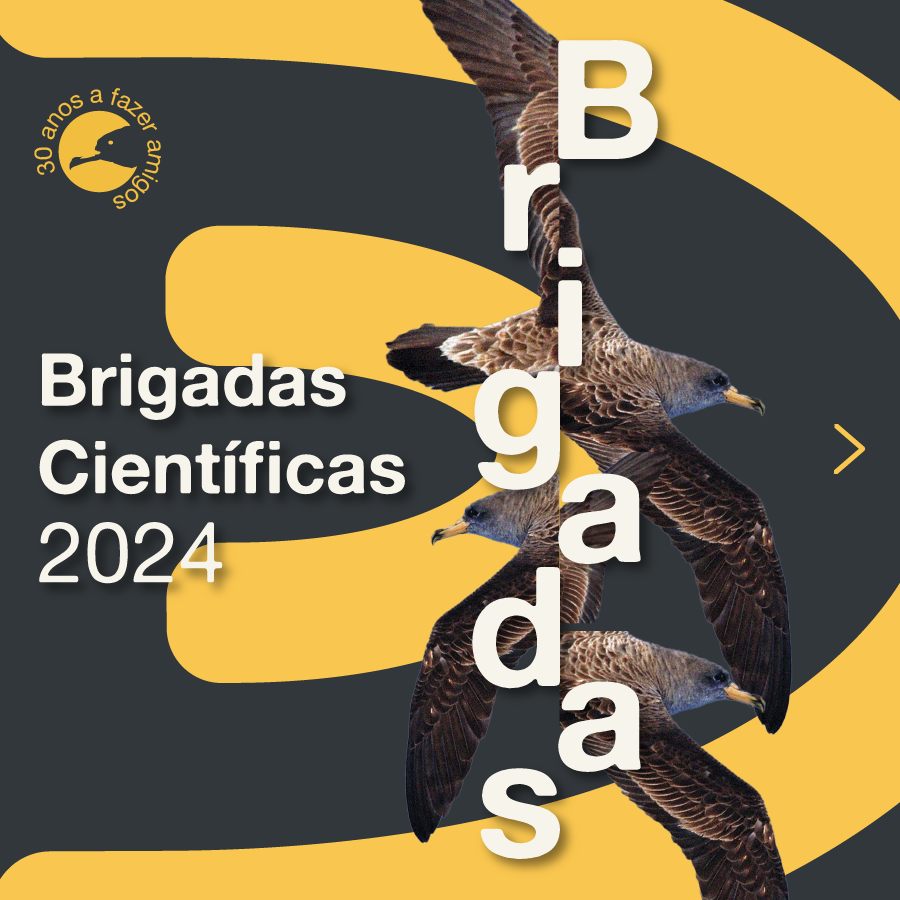
Scientific Brigades in the Azores
Scientific Brigades in the Azores
The Scientific Brigades
In the SOS Cagarro 2016 campaign, the Scientific Brigades were established, forming a new branch of the brigades already operating throughout the archipelago, now using a “citizen science” approach.
The aim is to encourage the formation of dedicated brigades that can collect more accurate and useful information for the scientific study of the association between the fall of juvenile shearwaters and existing light sources, as well as potentially other factors
It is suggested that these “scientific” brigades be organized by researchers or conservationists linked to NGOs or other entities wishing to join this initiative. However, applying the methodology may be difficult with groups of children or very large teams.
Several groups could be formed to cover different areas, increasing the program’s spatial coverage. Volunteers are encouraged to travel by car, recording and collecting all shearwaters found along their route.
The data on each Cory’s shearwater (rescue form code and individual number) must be clearly marked on the boxes to maintain traceability until the birds are ringed and released.
Ringing can only be carried out by accredited ringers.
We, therefore, encourage you to participate in this initiative, which will certainly provide valuable information to improve the conservation of this species.
This initiative is supported by ornithologists from the University of the Azores / IMAR and SPEA. If you have any suggestions, comments, questions, etc., please contact us at [email protected], so we can work together to improve the SOS Cagarro Scientific
Brigades.
To access the data registration form and guide, click on the following links:
The aim is to encourage the formation of dedicated brigades that can collect more accurate and useful information for the scientific study of the association between the fall of juvenile shearwaters and existing light sources, as well as potentially other factors
It is suggested that these “scientific” brigades be organized by researchers or conservationists linked to NGOs or other entities wishing to join this initiative. However, applying the methodology may be difficult with groups of children or very large teams.
Several groups could be formed to cover different areas, increasing the program’s spatial coverage. Volunteers are encouraged to travel by car, recording and collecting all shearwaters found along their route.
The data on each Cory’s shearwater (rescue form code and individual number) must be clearly marked on the boxes to maintain traceability until the birds are ringed and released.
Ringing can only be carried out by accredited ringers.
We, therefore, encourage you to participate in this initiative, which will certainly provide valuable information to improve the conservation of this species.
This initiative is supported by ornithologists from the University of the Azores / IMAR and SPEA. If you have any suggestions, comments, questions, etc., please contact us at [email protected], so we can work together to improve the SOS Cagarro Scientific
Brigades.
To access the data registration form and guide, click on the following links:
Form C - Rescue Registration Form for Public and Scientific Brigades (PT)
Form C - Rescue Registrartion Form for Public and Scientific Brigades (EN)
Please contact the Nature Park on your island to arrange for the ringing of the collected Cory’s shearwaters.
OMA Scientific Brigades (Faial)
From October 30 to November 6, driving along the north or south coast of the island in search of disoriented Cory's shearwaters. The starting point will be the campaign headquarters at Parque da Alagoa (next to the Municipal Swimming Pool) at 7:30 PM.
For registration and more information, contact OMA at [email protected] or 292 292 140.


